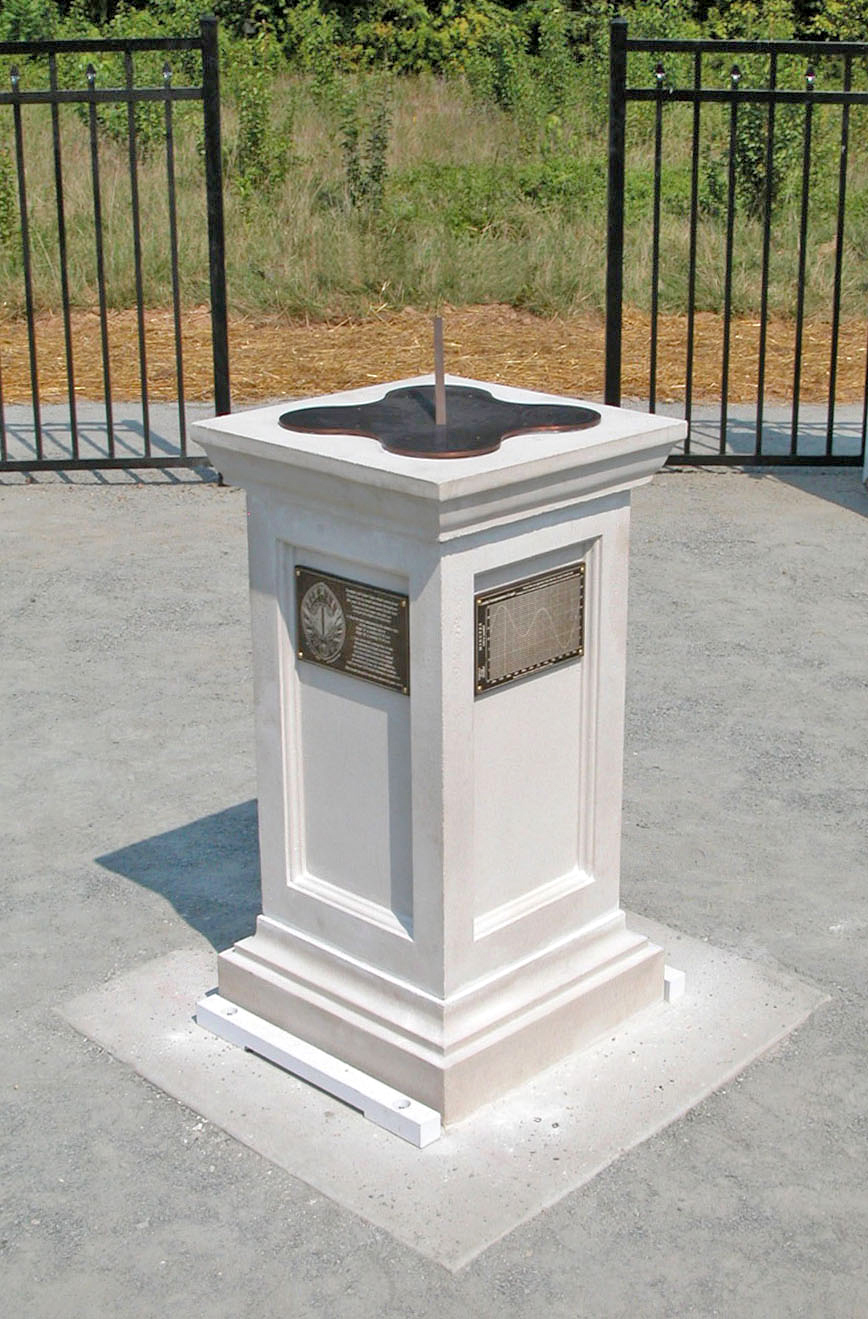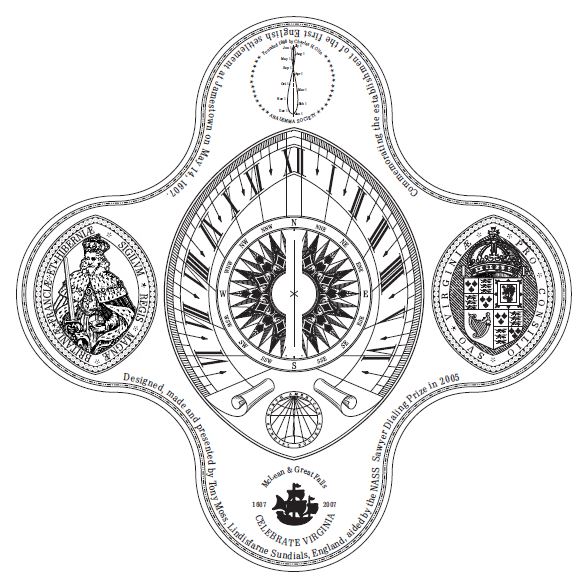- Details
- Category: Jamestown
 To celebrate the 400th anniversary of the Jamestown Colony, Tony Moss an English dialist and exquisite machinist [now retired] designed, manufactured, and presented a phosphor bronze horizontal dial to the Fairfax County Park Authority at Turner Farm, Observatory Park in Great Falls, VA. Details are at the North American Sundial Society website:
To celebrate the 400th anniversary of the Jamestown Colony, Tony Moss an English dialist and exquisite machinist [now retired] designed, manufactured, and presented a phosphor bronze horizontal dial to the Fairfax County Park Authority at Turner Farm, Observatory Park in Great Falls, VA. Details are at the North American Sundial Society website:
http://www.sundials.org/index.php/sundial-registry/onedial/633.html
The dial is shaped with four rounded cruciform arms that captures the balance between the New and Old World. The most striking feature is the inclusion of reproductions of King James Great Seal of the English Virginia Company. The "navette" (little boat) shape of the seal is also reflected in a similar shape of the dial itself.
These "English" features are balanced by American design features in the form of the "Celebrate Virginia" logo and that of the Analemma Society that co-funded the pedestal along with Fairfax County Park Authority. The impetus to make the dial was from Tony Moss receiving the Sawyer Dialing Prize from the North American Sundial Society in 2005.
The dial is located the Sundial Garden of Observatory Park in Great Falls Virginia at 38° 59.800' N 77° 18.700' W and sits on a square classical pedestal in reconstituted limestone made by Haddonstone UK. The pedestal and sundial are placed in a paved and railed area around the dial. A remarkable steel "safe" is provided to protect the dial and pedestal from theft and damage.

- Details
- Category: Jamestown
The Jamestown Colony, the first permanent English settlement in North America was established on May 14, 1607. The year before King James gave a charter to investors who formed the Virginia Company to establish a colony in the New World and of course search for gold and silver as well as a river to the Pacific Ocean.
Three ships containing about 100 colonists made their way along the Chesapeake Bay and landed on a narrow peninsula on a river that they named the James River. While some crew returned to England, the settlers led by John Smith, faced dysentery, starvation, and attack by the local Algonquian Indians tribes organized under Chief Powhatan. In 1607 John Smith was held captive by Chief Powhatan, and according to Smith, Pocahontas, a daughter of the Chief, had rescued him from death).
Dr. Sara Schechner and her compatriots A.D. Morrison-Low and Paolo Brenni [How Scientific Instruments Have Changed Hands, 2017 Boston] bring the Smith-Powhatan exchange alive with a story of Smith's sundial:
"We begin with the most famous sundial: the one that brought Captain John Smith into contact with the Indian princess Pocahontas, in 1607. It was a unusual, spherical, ivory compass sundial, and the dashing captain boasted that it had saved his life by fascinating his Indian captors in Virginia. Smith's spherical sundial does not survive, but archaeological excavations of the James Fort site have yielded examples of rectangular, ivory diptych sundials made in Nuremberg. This more common form was apparently preferred by the English gentlemen who accompanied Smith to Jamestown in 1607. The gnomonic projections on their sundials appear to be for latitudes more the 10 deg north of Jamestown, but accuracy in time finding was not critical in a wilderness fort. More important was the magnetic compass embedded in each diptych, which gave directions, and perhaps the fact that these ivory tools still had the capacity to impress other settlers of a lower status."

